Edward Tarr European Trumpet History Tour
Edward Tarr – Trumpet Soloist and Musicologist – 1971
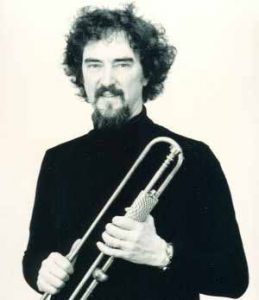
Edward Tarr holding a natural, Baroque trumpet.
Edward Hankins Tarr (born June 15, 1936) in Norwich, Connecticut, is a fine, classically trained American trumpet player and ground breaking musicologist. In 1953, Edward was a student of Roger Voisin, principal trumpet of the Boston Symphony Orchestra, and in 1958–1959 with Adolph Herseth, principal trumpet of the Chicago Symphony.
Early in his musical career, Edward Tarr moved to Europe and began his first trumpet soloist as well as brass ensemble recordings in 1960. In 1971, Edward resided in Basel Switzerland. In the late 1960’s Edward Tarr blossomed into becoming an internationally recognized pioneer in the revival of late Renaissance, Baroque (in particular) and Romantic era trumpet performance practice.
In 1968 the Edward Tarr Brass Ensemble was formed, the only one of its kind – with four trumpets and four trombones. Modern as well as antique instruments were used to perform Renaissance and Baroque music as well as modern works.
The recording that put Edward Tarr on the ‘map’ was released by Nonesuch Records in 1969 that was entitled “The Art Of The Baroque Trumpet”.
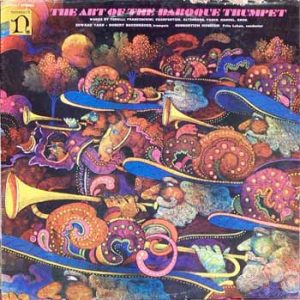
The Art of the Baroque Trumpet featuring Edward Tarr
The musical performances on trumpet as well as the accompanying orchestra were performed on musical instruments that were obtained from European Museums that were not used for live performance purposes for hundreds of years.
The trumpets were “Natural Trumpets” which are often referred to as ‘Baroque Trumpets’… A natural trumpet is a long, double-folded trumpet without valves. It was the trumpet used across Europe from the 15th through the mid 19th centuries, and is a common ancestor to all modern brass instruments. It is the trumpet that composers like Bach, Handel, Mozart, and Beethoven wrote for, and has had a resurgence in the past 50 years, since the late 1960’s in the performance of Baroque and Classical-era music.
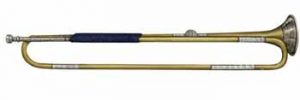
Natural – Baroque Trumpet
For additional information on Baroque or Natural Trumpets see…https://en.wikipedia.org/wiki/Baroque_trumpet

Edward Tarr holding a modern four rotary valve piccolo trumpet most likely of German origin
The quality of the musical performances on “The Art Of The Baroque Trumpet” recording are outstanding and the production values of this fine recording are equally outstanding. The artwork that is featured on the Album cover is also exceptional, unforgettable, and is reminiscent of the ‘Psychedelic Pop Art’ style of artwork that became popular in the late 1960’s in particular by way of the efforts of Peter Max and Alex Gray in particular.
Edward Tarr owned one of the world’s largest collections of original trumpet literature, which was acquired by the Royal Conservatoire of Scotland’s Archives & Collections in 2014.
By 1969, interest within the Classical Trumpet Universe began to take off regarding the performance of long forgotten Baroque Music Era musical compositions with an avalanche of brilliant recordings released by the French virtuoso trumpet player, Maurice André.
On a specially made, and newly designed four valve trumpet designed for Baroque era musical literature trumpet performances in the higher (clarino) register. This newly designed four valve “Piccolo Trumpet” is pitched one octave higher than the standard B♭ trumpet The four valve “Piccolo Trumpet” was produced by Selmer Musical Instruments in Paris and Maurice André’s impeccable standards were used for all aspects of the design and development of this fine musical instrument.
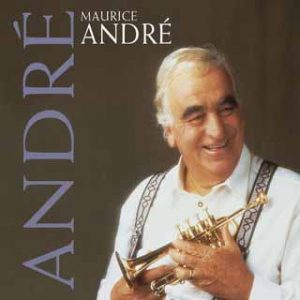
Maurice André holding a Selmer 4 Valve Piccolo Trumpet
In an effort to enlarge the trumpet repertoire, Maurice André transcribed for trumpet, Baroque musical literature composed for oboe, violin, and voice. At the time of Maurice André’s retirement in 2004, André had released more than 300 recordings, radically more than any other classical trumpeter.
The enormous commercial success of Maurice André’s Baroque musical recordings ‘greased the wheels’ for the outstanding reception and critical acclaim that the Edward Tarr recording, “The Art Of The Baroque Trumpet” received in 1969.
Edward Tarr’s tireless and enthusiastic devotion to the history and performance of long forgotten, but musically compelling musical literature is immeasurable within the Musicological Universe.
Trumpeter, Bob Amato still has a treasured vinyl copy of the fine recording, “The Art Of The Baroque Trumpet” and this recording is just as compelling to listen to today as when it was first released 50 years ago in the late 1960’s.
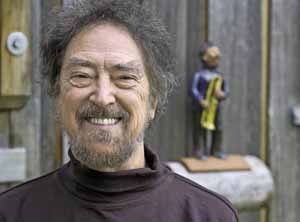
The ever genial Edward Tarr relaxing near his European home area circa 2010.
Edward Tarr European Trumpet History Tour – Spring 1971
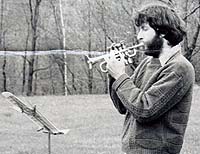
Bob Amato practicing his Selmer 4 piston valve piccolo trumpet outdoors in the fall of 1970.
Trumpeter, Bob Amato first heard about the efforts of Edward Tarr in late 1970 by way of UMASS-Amherst trumpet instructor, Professor Wally Chesnut.
Back in 1969, Wally had scheduled a ‘special group class’ where attendance was mandatory for all his trumpet students. Wally played for the class his own personal copy of the Edward Tarr recording entitled “The Art Of The Baroque Trumpet”.
Wally Chesnut was super enthusiastic about the significance of this recording and all of the student trumpet players were also impressed.
Wally Chesnut became so impressed with Edward Tarr’s own trumpet history and natural Baroque trumpet performances that Wally devoted the remainder of his professional trumpet teaching career advancing his own knowledge as well his students knowledge of the history of the trumpet. Here is a snippet on YouTube of Wally conducting a ‘History of the Trumpet’ demonstration that appeared to be recorded in 1991.
In late 1970, Wally Chesnut ‘got wind’ of a European Trumpet History Tour that was being organized by Edward Tarr. Edward Tarr was organizing a 14 day European Trumpet History Musicological tour that was scheduled during the 1971 UMASS-Amherst College Spring Break time frame.
Because Bob Amato had already developed a keen interest in performing music literature of this era…and, also had developed reasonable proficiency in performing the demanding high, (clarino) register trumpet parts on his own Schilke D/E♭ and Selmer 4-Valve Piccolo trumpets, Wally Chesnut encouraged Bob to accompany Wally on the Edward Tarr European Trumpet History Tour.
Ultimately, Professor Wally Chesnut helped his student, Bob Amato obtain either a scholarship or grant that fully funded Bob’s participation in the Edward Tarr European Trumpet History Tour.
The European Trumpet History Tour would include visits to Museums that had significant antique brass instrument collections in the following European Cities.
London, England – Beginning of Tour – 1 night (Museum of Instruments, Royal College of Music) and (Royal Academy of Music)
Brussels, Belgium – 1 night (Musical Instrument Museum)
Basel, Switzerland – 1 Night (The Musikmuseum)
Nuremberg, Germany – 1 Night (Germanisches Nationalmuseum)
Hamburg, Germany – 1 Night (The Museum für Kunst und Gewerbe Hamburg)
Leipzig, Germany – 1 Night (The Museum of Musical Instruments)
Munich, Germany – 2 Nights (Deutsches Museum) and (Münchner Stadtmuseum)
Vienna, Austria – 2 Nights (Kunsthistorisches Museum)
Paris, France – 3 nights (Musée de la musique | Philharmonie de Paris) and (The Louvre)
London, England– 1 Night and conclusion of the tour (Musical Instruments Collection, Victoria & Albert Museum)
The cost of the trip included round trip air fair from New York to London, bus ground transportation between European cities, hotel accommodations, two meals a day at the hotels (breakfast and dinner), bus transpiration to the museums, admission to museums, and meetings with celebrity brass instrument performers. By modern standards, the hotel accommodations would probably be 3 star rated that were clean, comfortable, and had private bathroom access. All of the hotel room accommodations would be shared two bed arrangements.
Edward Tarr, who was fluent in both French and German had personal relationships with the curators of all of the Musical Instrument oriented museums that were on the itinerary and Edward Tarr himself would be acting as the tour guide to all musically oriented events. Edward arranged for the Curators of the Museum Musical Collections to personally conduct the Trumpet Musical History Tours in both public and private areas of the respective museum archives noted above.
In addition, notable brass instrument ‘celebrities’ would have scheduled meetings with members of the tour which included German Trumpeter, Adolph Scherbaum, the Principal French Horn Player of the Vienna Philharmonic (name forgotten), and English Trumpeter, Philip Jones in London. A tour of the Selmer Brass Instrument factory in Paris was on the itinerary. And, a visit with French Trumpeter, Maurice André was also on the itinerary.
In 1971, there were only six classical trumpet soloists in the world who had achieved prominence throughout the world. For additional information about these six trumpet soloists, CLICK HERE. The opportunity to personally meet three of the six most prominent classical trumpet soloists in the world in person was particularly appealing to the members of the tour group.
The trumpet playing members of the tour were encouraged to bring one or more of their own trumpets with the mistaken belief that some or all of the ‘celebrity trumpet’ players that would be meeting on occasion with the group. Wally Chesnut traveled with his Schilke C and Schilke Piccolo trumpets. Bob traveled with his own Schilke C trumpet and Selmer 4 Valve Piccolo trumpet.
Bob Amato also recalls that participants of this tour would earn ‘One College Credit Hour’ that could be applied to the American College graduation credit requirement system.
Wally Chesnut and Bob flew from New York to London together on the same flight. Bob does not remember Wally traveling with his Wife. At that time Wally had a least one small male child, Walter, Jr. and possibly other small children. It is logical that Wally’s wife would have stayed home with the children during the course of the two week tour. However, Wally and Bob did not room together at any of the hotel. So, it is quite possible that Wally did travel with his wife. When Wally and Bob both arrived at the designated hotel first thing in the morning they were assigned separate hotel rooms.
The written itinerary included directions for the group to meet at a meeting room in the hotel where Edward Tarr would provide to the group introductions and further direction via a late morning brunch which was part of the first day of the tour’s activities.
The written itinerary also included the names of each of the European Trumpet History Tour participants along with a one sentence ‘bio’ of each trumpet player tour participant.
Bob Amato, age 19 years of age, was by far the youngest tour participant and the only College Music Major Undergraduate tour participant. The remainder of the trumpet players in their twenties were working on Post-Graduate Masters or Doctoral Degrees. There were also a number of Music School College Trumpet Instructors that were also tour participants such as Professor Wally Chesnut from UMASS-Amherst.
Bob’s assigned roommate for the tour was an American of German descent who was in his late twenties who was working on a Masters Degree in Trumpet Performance possibly at the University of Nebraska.
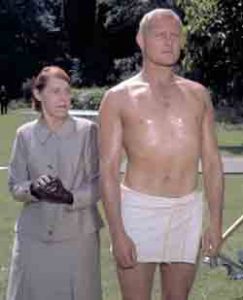
Bob Amato’s European Trumpet History Tour roommate – Herr Bökenbanger
This tour participant was a tall, rugged, square jawed blond that bore a striking resemblance to actor Robert Shaw who was cast as the Russian male KGB assassin in the James Bond Movie, “From Russia With Love”.
Bob’s roommate had earned a Bachelors Degree in Trumpet performance when he was in his early twenties. After earning a BA in Trumpet Performance, he enlisted in the Army Band program and spent two years stationed at a large U.S. Military Base in Germany. He was rather fluent in German as well. The name of Bob’s roommate was “Harold Richten-something or other”…for the remainder of this essay, “Harold” will be referred to as either Herr Richtenflögger, Herr Bökenwanker, Herr Fröbenwanker, Herr Fröbenbanger, Herr Krabbéwönker, Herr Vanderbööten, or HerrBökenbanger.
Herr Bökenbanger was married to a lovely blond woman in her mid-twenties and he also had a son less than one year old. Herr Fröbenwanker claimed he was madly in love with his beautiful wife and showed Bob multiple photo’s of his young wife and son on a daily basis. And, Herr Fröbenwanker also told Bob on a daily basis how much he missed having “lots of intimate relations” with his wife on a daily basis.

Photo of a model who bore a striking resemblance to a Viennese prostitute named “Gwendel” that Herr Krabbéwönker engaged with in Vienna
However, Herr Vanderbööten also had an appetite for blond prostitutes of German descent who bore an uncanny resemblance to his wife. A Herr Richtenflögger encounter with a blond prostitute named “Gwendel” in Vienna in particular that Herr Bökenwanker “falsely” attributed to being referred to Herr Fröbenbanger by UMASS-Amherst Professor Wally Chesnut is discussed in the essay entitled, Trumpet History Tour Hotel Brothel In Vienna.
The only full time orchestral trumpet player that was a tour participant was a fine trumpet player who was the Assistant Principal Trumpet (3rd Trumpet Chair) who was in his late thirties years of age and was a member of the Milwaukee Symphony Orchestra.
All of the European Trumpet History Tour participants were Americans. There were somewhere between 15 and 20 trumpet player tour participants. The only non-trumpet player tour participant was a distinguished middle age gentleman who played French Horn, had a Doctorate in Music History and taught Music History as well as French Horn at a Music Department at a College in the Mid-West United States which might have been Oberlin College and the Oberlin Conservatory of Music.
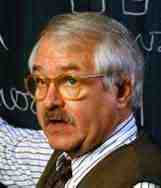
College Professor Model who looked quite similar to the French Horn player who was part of the tour group
This particular participant looked like a College Professor out of Hollywood Casting. He was well into his fifties age wise, had a salt and pepper mustache and longish, but receding salt and pepper hair. He always wore a tweed sport coat and white shirt and tie and he wore round, tortoise shell rim spectacles.
The French Horn player and the trumpet player who was a member of the Milwaukee Symphony Orchestra roomed together and may have been related by marriage. Both of these tour participants were experienced European travelers and had a small measure of fluency in both French and German languages. They both also had a wonderful sense of humor and were highly entertaining to ‘hang around‘ with. Both of these participants considered themselves to be European Beer Connoisseur’s.
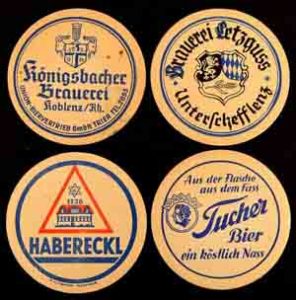 Both of these two men consumed considerable quantities of European Brew in the evening hours at various bar’s and restaurants during the course of the tour. And, both of these men collected large numbers of beer coasters that were served with glasses. The French Horn player College Professor also collected beautifully crafted beer steins as well.
Both of these two men consumed considerable quantities of European Brew in the evening hours at various bar’s and restaurants during the course of the tour. And, both of these men collected large numbers of beer coasters that were served with glasses. The French Horn player College Professor also collected beautifully crafted beer steins as well.
The French Horn player and Milwaukee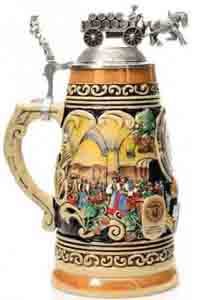 Symphony Orchestra trumpet player took an immediate liking to Bob Amato. The French Horn player told Bob that Bob reminded the French Horn player of his youngest Son who was also a trumpet player, but did not participate in the tour. Bob was glued to the side of both of these men during the entire course of the European Trumpet History Tour.
Symphony Orchestra trumpet player took an immediate liking to Bob Amato. The French Horn player told Bob that Bob reminded the French Horn player of his youngest Son who was also a trumpet player, but did not participate in the tour. Bob was glued to the side of both of these men during the entire course of the European Trumpet History Tour.
Each scheduled Museum Tour lasted about 4 hours. The private, Curator and Edward Tarr guided portion of the Trumpet History Tour took anywhere from 1 1/2 to 2 hours with plenty of time for questions and answers. The remainder of each Museum tour visit could be utilized by the participants exploring other public areas of the various museums.
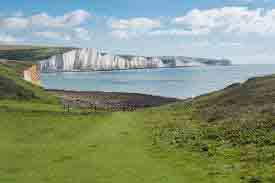
White Cliffs of Dover
After the first night in London, the tour participants had an early morning breakfast together at the hotel and departed by way of a charted tour bus to the beautiful White Cliff’s of Dover coastline in Dover, England to catch a ferry across the English Channel to the European mainland and France for the next 13 days of the journey whose itineray is referenced above.
Upon reaching the French Coast from England, the tour participants boarded a first rate European Tour bus that was managed by an equally excellent driver who spoke English and also
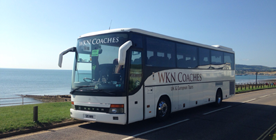
European Style Tour Bus
acted as a tour guide. The tour bus appeared to be brand new and had very large windows that enabled the occupants to easily view the passing scenery. The driver, was well groomed, uniformed, courteous, spoke excellent English and was also an excellent tour guide. The driver was also responsible for maintaining the cleanliness of the vehicle and the tour bus and the interior of the bus was kept spotless by the driver during the entire time this driver was retained over a 12 day period. The same driver and tour bus also provided transportation between the hotels and Trumpet History Tour local destinations.
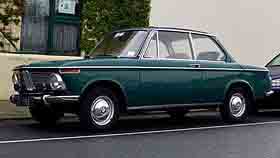
Late 1960’s vintage BMW Model 2 automobile.
Edward Tarr did not travel with the tour participants via the chartered tour bus. Edward traveled between destinations in his personal vehicle which appeared to be the same or similar to a on what appeared to have been a BMW Model 2 automobile.
There were three celebrity brass player ‘guest’ speakers during the course of the tour. (A fourth celebrity brass player guest speaker who was on the tour Itinerary set for Paris was Maurice André who was cancelled on short notice due to either illness or a scheduling conflict)
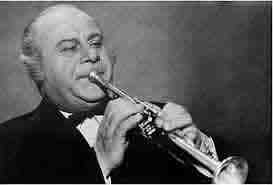
Adolph Scherbaum – Baroque Era Piccolo Trumpet Soloist
The first was German trumpet soloist, Adolph Scherbaum. Scherbaum was born in what is now the Czech Republic but later in life following trumpet soloist performances in Berlin, Scherbaum settled in West Germany where he taught at the Hochschule für Musik Saar which is music conservatory located in Saarbrücken, Germany.
Adolph Scherbaum is considered to be the “Trailblazer of the Baroque Era Classical Solo Trumpet” AND ALSO>>> – http://ojtrumpet.net/interview/scherbaum/
By extensive training Scherbaum developed unusual muscle strength in his diaphragm, abdomen and cheeks (at the University of Basel they measured 2,5 atmospheric pressure) so that he was able to play double high C’s effortlessly.
Scherbaum placed the “Low or No Pressure Method” of playing the trumpet to be most important above any other form of physical, and muscular training of the Embouchure, Adolph Scherbaum could compress his lip and cheek muscles to such an enormous degree that Scherbaum could play in the extreme high register of the trumpet with virtually no mouthpiece pressure applied to his lips.
The European Trumpet History Tour participants met with Adolph Scherbaum at a private meeting room at a restaurant in the countryside outside of either Nuremberg or Hamburg, Germany. Scherbaum was accompanied by a male student in his twenties who also acted as Scherbaum’s interpreter.
By German standards, Scherbaum was short and could not have been more than 5 foot – 5 inches tall. Scherbaum was stocky, and very powerfully built. Scherbaum had a barrel chest and his torso diaphragm area were as broad and extended as far forward as his chest. Scherbaum was built like a ‘Bull” or a “Fireplug” which ever suits the readers fancy.
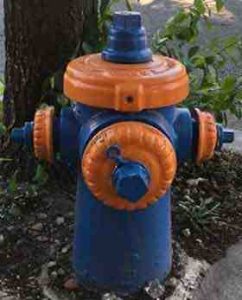
Adolph Scherbaum had the physique and air pressure delivery system reminiscent of a Fireplug.
The meeting with Scherbaum began with lunch followed by a demonstration of the “Scherbaum Low or No Pressure Method” of playing the trumpet.
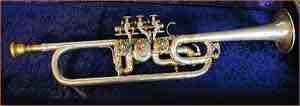
Adolph Sherbaum’s famous silver 3 rotary valve piccolo trumpet
The Scherbaum trumpet playing demonstration began with Scherbaum’s assistant setup a telescoping “L-Shaped” stand like contraption that would enable Scherbaum to suspend a trumpet held by a string suspended from the top “L” support of the stand. This suspending a trumpet on a string arrangement would enable Scherbaum to position a trumpet mouthpiece to his lips, but have access to the ‘rotary valves’ of a standard size B Flat trumpet with minimal mouthpiece pressure to his lips.
A very large percentage of young trumpet players who do not have the benefit of a well schooled professional trumpet teacher, (the author of this essay is among this number) develop the very poor habit of using extensive arm pressure to “mash” the mouthpiece into the lips or embouchure against the teeth. Although this flawed “grip and rip” excessive mouthpiece practice will enable the player to extend the players upper register on the trumpet to some degree. The excessive mouthpiece pressure “artificially” compresses the lips and air-stream through the mouthpiece which ultimately enables notes to be played higher and higher into the upper register.
However, applying excessive mouthpiece pressure to the embouchure over time causes the lip muscles to become prematurely fatigued, delicate lip muscles can become swollen or even damaged. This premature embouchure fatigue will reduce a players flexibility, endurance and ultimately the trumpet players range. Excessive mouthpiece pressure can also cause serious nerve damage to a trumpet players embouchure to the point that it becomes so painful that playing the trumpet becomes an impossible task.
Consequently, it is desirable for a trumpet player to learn to stop relying on arm and hand pressure to compress the embouchure to the required degree to ascend and descend the musical scale. When the vast majority of the needed compression to ascend the musical scale is achieved through muscle compression of the embouchure, a player will extend flexibility, endurance and range immeasurably.
Adolph Scherbaum’s ‘Low Pressure” demonstration was performed on a traditional, German made B flat full size trumpet with three rotary valves.
Scherbaum performed a series of scales, and arpeggios on a musical scale ascending basis that reached to at least a “Double High C” and probably even higher with virtually no mouthpiece pressure whatsoever.
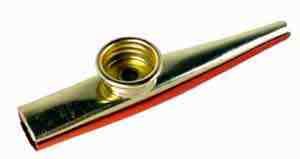
Metal Kazzoo
However, the “quality of the sound” that “Scherbaum” produced was quite “hideous”. The tone quality that Scherbaum produced was extremely tinney sounding, shrill at best, and ‘Kazzoo’ sounding at worst.
The quality of sound that Scherbaum produced during the course of this “Low Pressure” demonstration was abominable.
Scherbaum randomly invited two or three American trumpet players who witnessed Scherbaum’s own demonstration to give the “Low Pressure:” method a try as well. At best, the American trumpet players could only ascend to G above the first staff. However, the American trumpet players did produce a much more pleasing tone on the trumpet than Scherbaum did.
Scherbaum continued his demonstration by performing some high register trumpet musical excerpts of famous Baroque Era musical literature including bits and pieces of Bach’s Brandenburg Concerto #2. Scherbaum performed the demonstration
on a 4 rotary valve piccolo trumpet of German origin.
The sound or tone quality that Scherbaum produced while performing the Baroque Era high register trumpet excerpts on piccolo trumpet was even more abysmal than the tone produced on the normal size B Flat trumpet that was used for the “Low Pressure” demonstration.
Including a fine lunch, and the multi faceted Adolph Scherbaum trumpet demonstration, Scherbaum presentation took an estimated 2 to 2 1/2 hours.
Judging by the tepid applause that Scherbaum generated from the presentation attendee’s, Bob Amato’s impression of Scherbaum’s trumpet playing skills were shared by the other attendee’s.
After Scherbaum packed his gear and departed the meeting room, Bob told Wally Chesnut that Scherbaum produced a trumpet tone that sounded like a “very loud Kazoo”. The ever gracious Wally Chesnut simply smiled and shrugged his shoulders.
That same evening, Bob also commented on the unpleasant trumpet tone that Adolph Scherbaum produced with the trumpet player member of the tour group who was a member of the Milwaukee Symphony Orchestra. That tour member said, “Perhaps
Scherbaum was having a bad day!”
However, too his credit, Adolph Scherbaum had an engaging and cheerful, jovial, good
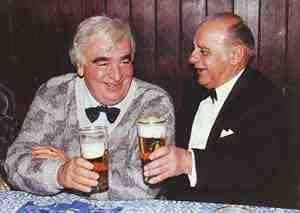
Maurice Andre and Adolph Scherbaum enjoying a glass of beer together.
humored personality who seemed to really enjoy interacting with the American trumpet players that he performed for. There was also more than ample time for questions and answers from Scherbaum as well. Adolph Scherbaum’s favorite beverage was German Beer and he consumed multiple large glasses of this fine brew during the course of his demonstration to the tour members.
Bob Amato acquired and still has an “Adolph Scherbaum Souvenir” that he obtained at the conclusion of the Scherbaum demonstration.
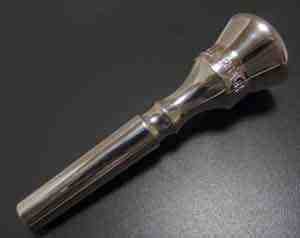
‘PROF. SCHERBAUM’ 1 ½ C trumpet mouthpiece
Bob acquired a ‘PROF. SCHERBAUM’ 1 ½ C trumpet mouthpiece which is still in Bob’s possession.
Bob cannot remember if Scherbaum passed these types of trumpet mouthpieces gifted the mouthpieces to members of the tour group or not. Bob does not think he paid Scherbaum for this mouthpiece because Bob never applied this mouthpiece to his lips. (This is the only piece of memorabilia of this event that is still in Bob’s possession.) Almost all of Bob’s musical memorabilia including photographs was lost due to water damage caused by Hurricane Katrina that devasted New Orleans at the end of August 2005.
The second “celebrity brass player” guest speaker that the tour group encountered was a French Horn player who was the Principal Horn Player with either the either the Vienna
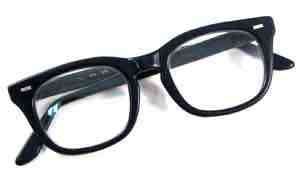
Black Horn Rimmed Glasses
Philharmonic Orchestra, Vienna Symphony, or the Vienna State Opera. Bob cannot remember the name of this Horn Player. However, Bob does recall that this
Horn player had thick wavy black hair, wore black horn rimmed glasses with unusually thick lenses.
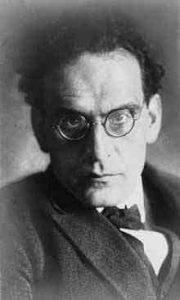
Otto Klemperer
This horn player also bore a striking resemblance to conductor, Otto Klemperer.
The tour group had a nice lunch with this horn player at a restaurant in Vienna that was located near the fabulous Kunsthistorisches Museum.
During lunch, Bob sat next to this horn player and learned that including his own native German language, this horn player was fluent in eight languages. The study of foreign languages was a passionate hobby of this horn player. His English was remarkably fluent and he could speak English with a United States, Mid-Western accent. This horn player participated in the private, brass instrument tour of the Kunsthistorisches Museum and also acted as the Museum Curator’s interpreter.
The tour group spent two nights in beautiful Vienna at hotel that turned out to be a very established Brothel. More on this Brothel can is discussed in ANOTHER ESSAY.
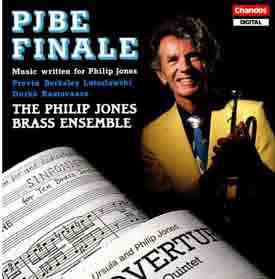
Philip Jones
The third “celebrity brass player” guest speaker was “Philip Jones”. Also see>>(New York Times Obituary).
Philip Jones was a talented and wonderfully engaging, marvelously humorous, English, classically trained trumpet player in London who did not achieve prominence as a classical trumpet soloist.
However, Philip Jones was a highly accomplished orchestral trumpet player. Remarkably, Jones was engaged as principal trumpet with most of the other major London orchestras in succession: the Royal Philharmonic (1956-60), the Philharmonia (1960-64), the Philharmonic (1964-65), the New Philharmonia (1965-67) and the BBC Symphony (1967-71). During his career he played under most of the great conductors, from Erich Kleiber to Pierre Boulez.
Philip Jones was also a much in demand London recording session musician who also founded the “Philip Jones Brass Ensemble”.
The Philip Jones Brass Ensemble was founded in 1951. This Philip Jones Brass Ensemble performed as a brass quintet or as a ten-piece ensemble on occasion as well.
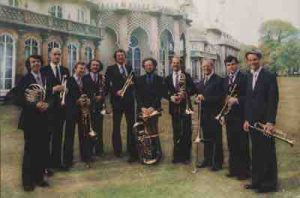
Philip Jones Brass Ensemble circa 1970
The Philip Jones Brass Ensemble was considered to be the first modern “actively organized” brass ensemble and certainly the most important to be formed in the World. By 1971, the only other prominent Brass Ensemble on the planet was in North America. This brass ensemble was the New York Brass Quintet. and see https://music.yale.edu/tag/new-york-brass-quintet/
The tour group had a wonderful luncheon meeting with Philip Jones which took place near the final London museum that was on the trumpet history tour itinerary. Philip Jones accompanied the group on the Museum tour and Jones also provided his own unique insight on the significance of the brass instruments that were viewed.
At the conclusion of the museum tour, Philip Jones surprised the tour group. Jones invited the tour group to attend a Philip Jones Ten Piece Brass Ensemble rehearsal that was going to begin in about an hour after the museum tour ended. This rehearsal was preparation for an upcoming Philip Jones Brass Ensemble recording.
The tour group utilized multiple London taxi cabs to travel to this Philip Jones Brass Ensemble rehearsal. Bob Amato had the good fortune of traveling in the same taxi as Philip Jones and was seated next to Jones during the drive to the rehearsal.
Jones asked Bob where he was from. Jones became particularly interested when Bob told Jones that Bob’s Grandmother, on his Father’s side was born and raised in England. And, according to Amato ‘family legend’, Bob’s English Grandmother’s, Grandfather was a prominent Welsh Tenor Opera Singer who was over 6 1/2 feet tall.
Musically, the rehearsal was the highlight of the Edward Tarr Trumpet History European Tour. The performance skills of Philip Jones Ten Piece Brass Ensemble were extraordinary.
After the rehearsal was over, the tour group members who were in attendance were invited to walk to a nearby London Pub for beer and ‘bar food’ that turned out to be an enormously entertaining event in it’s own right.
The Edward Tarr European Trumpet History Tour was an unforgettable, once in a life time experience. And, this was the only European Trumpet History Tour that Edward Tarr ever organized. The Author of this essay, Bob Amato would like to thank Edward for the enormous effort it took to organize and conduct such a memorable musical event.
It should be noted that Edward Tarr currently resides in Munich and is still in good spirits and is active musically. Bob Amato recently contacted Edward via eMail via Edward Tarr Website in preparation for this essay and received timely responses from his inquires to Edward.
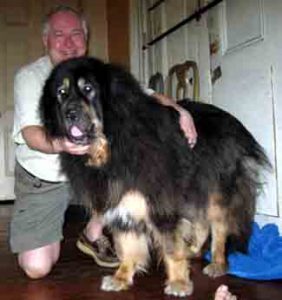
Bob Amato in New Orleans in 2012 visiting his best and only friend, ‘Wanna Be’ Bandleader, “Square Bear” – a 165 lb. Female Tibetan Mastiff that was 5 years old.
